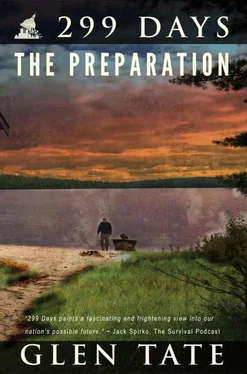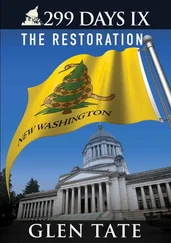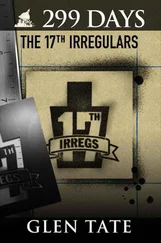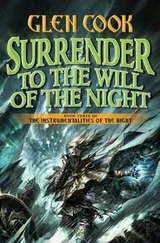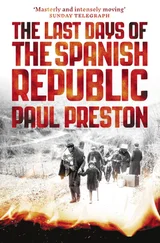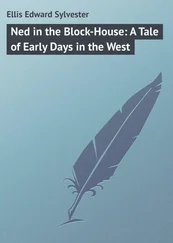Glen Tate - 299 Days - The Preparation
Здесь есть возможность читать онлайн «Glen Tate - 299 Days - The Preparation» весь текст электронной книги совершенно бесплатно (целиком полную версию без сокращений). В некоторых случаях можно слушать аудио, скачать через торрент в формате fb2 и присутствует краткое содержание. Город: Augusta, ME, Год выпуска: 2012, ISBN: 2012, Издательство: PrepperPress, Жанр: sf_postapocalyptic, на английском языке. Описание произведения, (предисловие) а так же отзывы посетителей доступны на портале библиотеки ЛибКат.
- Название:299 Days: The Preparation
- Автор:
- Издательство:PrepperPress
- Жанр:
- Год:2012
- Город:Augusta, ME
- ISBN:978-0615680682
- Рейтинг книги:3 / 5. Голосов: 1
-
Избранное:Добавить в избранное
- Отзывы:
-
Ваша оценка:
- 60
- 1
- 2
- 3
- 4
- 5
299 Days: The Preparation: краткое содержание, описание и аннотация
Предлагаем к чтению аннотацию, описание, краткое содержание или предисловие (зависит от того, что написал сам автор книги «299 Days: The Preparation»). Если вы не нашли необходимую информацию о книге — напишите в комментариях, мы постараемся отыскать её.
299 Days: The Preparation
299 Days: The Preparation — читать онлайн бесплатно полную книгу (весь текст) целиком
Ниже представлен текст книги, разбитый по страницам. Система сохранения места последней прочитанной страницы, позволяет с удобством читать онлайн бесплатно книгу «299 Days: The Preparation», без необходимости каждый раз заново искать на чём Вы остановились. Поставьте закладку, и сможете в любой момент перейти на страницу, на которой закончили чтение.
Интервал:
Закладка:
There were sound reasons to stock up on ammo, other than the impending collapse Grant foresaw. First of all, there was almost no ammunition available during the ammo scares so Grant couldn’t enjoy his hobby of shooting unless he stocked up. Second, the price of ammo, when it was available, was skyrocketing. It made financial sense to invest now in something that was rising in price, would last for decades, and would undoubtedly be used.
As much as Grant hated to admit it,there was an emotional reason to stock up on ammo. Having cases of it curbed his concerns about the future. There were real dangers out there to prepare for. It was amazingly comforting to be doing something about all the problems that were bubbling out there. He was taking action instead of sitting around worrying.
Any thinking person realized that there were plenty of things to be worrying about. It was obvious things were falling apart in the United States. The Federal Reserve was creating trillions of dollars out of thin air.
Many people did not know what the Federal Reserve did.
Grant found out and was surprised.
A big stumbling block for Grant even wanting to learn about the Federal Reserve was all the weirdoes who constantly harped about how the Federal Reserve was a “Jewish conspiracy” to take over the world. Grant wasn’t crazy, so he was reluctant to look into something that only seemed to be of concern to crazy people.
However, he took a few minutes and learned about the Federal Reserve. It wasn’t a “Jewish conspiracy,” and it wasn’t complicated. It was a bunch of bankers of varying ethnic backgrounds and it was all out in the open.
The Federal Reserve was a central bank, basically the big bank that lent all the money to all the banks in the U.S. It was not a federal agency; it was just the biggest bank that had a license from the federal government to create money. Yep, that’s right. They got to create money. Out of thin air.
Grant had always assumed the U.S. Treasury created money on printing presses and with the consent of Congress. He was wrong. The Federal Reserve, a collection of big banks, would decide, on its own, to create money by loaning electronic dollars to other banks. For example, one day the Federal Reserve might decide to loan a hundred billion dollars to a major bank in the U.S. or in a foreign country. The Federal Reserve did this by creating credits on their computers. They would just credit the electronic accounts of the other bank with one hundred billion. That meant— poof — the other bank now had account balances that said they had an extra hundred billion dollars. It was all electronic. There was no cash or gold or anything backing up the hundred billion dollars that the computer screen said existed. It just appeared in the other banks’ accounts. Then the bank loaned out the hundred billion dollars in their account to other banks, and those banks loaned it to people. The other banks had to pay each other back, including the bank that had borrowed the money directly from the Federal Reserve. So, the Federal Reserve got its hundred billion dollars (that it just created on a computer) with interest. The Federal Reserve kept this massive sum of interest for itself and loaned some of it back. God only knows what else it did with this massive slush fund.
All of this was secret because it was not a government agency, so it wasn’t subject to the Freedom of Information Act that allows the public to see most government documents. No one could find out about what the Federal Reserve was doing. Not even Congress.
Yeah, but what about that dollar bill in everyone’s wallets? That was money, right? It said on it that is was a “Federal Reserve note.” What’s that?
Debt. It’s a certificate of debt that says the Federal Reserve owes the person with the dollar bill one dollar (that they can just create with a few clicks of a computer). That’s right: a dollar is just “debt”; it’s not an asset like a small chunk of gold. Americans didn’t trade money around; they traded debt.
Grant was driving up to a McDonald’s drive-thru getting the kids Happy Meals when he realized that a dollar was just debt. He took out a $20 bill he had earned by working hard and gave that $20 bill to McDonald’s in exchange for some Happy Meals. After giving Grant some change, McDonald’s took that $20 bill and used it to pay their French fry supplier. The French fry supplier took the $20 in a bank account and bought potatoes. The potato farmer took the $20 now in his bank account and bought some fuel for his tractor. And so on. That $20 bill piece of paper was traded for Grant’s labor, Happy Meals, French fries, potatoes, and fuel — things that are real and have value.
But that $20 piece of paper isn’t “money” in the sense that it’s worth anything. Labor, Happy Meals, potatoes, and fuel are things that are worth something. That dollar — a piece of paper representing debt the Federal Reserve owes the holder of the bill — is only worth something because things can be purchased in exchange for it. A person can get Happy Meals for that piece of paper because McDonald’s believes it can trade that piece of paper for uncooked French fries. It’s the belief that someone will accept the piece of paper in exchange for stuff that makes that piece of paper worth anything. If McDonald’s and everyone one else started to say they wouldn’t accept dollars, but would only accept some new currency like gold or silver, that $20 bill would quickly become just a piece of paper. A person couldn’t feed that piece of paper to their kids. The whole system worked on a belief that that piece of paper was worth stuff because it could be exchanged for stuff. It was that simple. The whole system worked on a belief.
It hadn’t always been this way. A hundred years ago, a twenty dollar bill was backed by an ounce of gold. Someone could take that twenty dollar piece of paper into a bank and say they’d like a one- ounce $20 gold coin for it. “Here you are,” would be the answer as the bank teller handed them a one-ounce gold coin that said, “$20” on it. The $20 bill and a one-ounce gold piece were interchangeable.
That meant that $20 was worth a set amount: one ounce of gold. The value of the dollar couldn’t fluctuate much; it was worth a set amount of gold. And could easily be traded for something of real value: gold.
Not anymore; not even close. When money can be created out of thin air, people will want to create lots of it, just as the Federal Reserve did. When there was a downturn in the economy, the politicians would call the Federal Reserve and beg them to create more money to loan to people to get them to spend it. “No problem,” the Federal Reserve would say; it made interest on all that money it was creating. A few clicks of the Federal Reserve computer and the economy had a few billion, or even trillion, more dollars in it. People were a few billion or trillion more in debt (because all these dollars are really debt). More spending, more debt. The economy improves and the politicians get re-elected. What’s not to love?
More spending and debt, that’s what’s not to love. Common sense dictates that such a cycle can’t continue without a consequence. Inflation is that consequence.
If there are ten trillion dollars out there and then the amount is increased to twenty trillion, each dollar is worth half as much. There is only a certain amount of stuff to buy with those dollars; when there are more dollars chasing the same amount of stuff, it will take more dollars to get the same amount of stuff. As Jack Spirko on the Survival Podcast explained it, it is like playing a game of Monopoly. One player has a color copy machine and just makes twice as much Monopoly money. There are twice as many Monopoly dollars in circulation. Pretty soon, that Boardwalk property that was $500 goes up to $1000 because everyone has twice as many pieces of paper money.
Читать дальшеИнтервал:
Закладка:
Похожие книги на «299 Days: The Preparation»
Представляем Вашему вниманию похожие книги на «299 Days: The Preparation» списком для выбора. Мы отобрали схожую по названию и смыслу литературу в надежде предоставить читателям больше вариантов отыскать новые, интересные, ещё непрочитанные произведения.
Обсуждение, отзывы о книге «299 Days: The Preparation» и просто собственные мнения читателей. Оставьте ваши комментарии, напишите, что Вы думаете о произведении, его смысле или главных героях. Укажите что конкретно понравилось, а что нет, и почему Вы так считаете.
